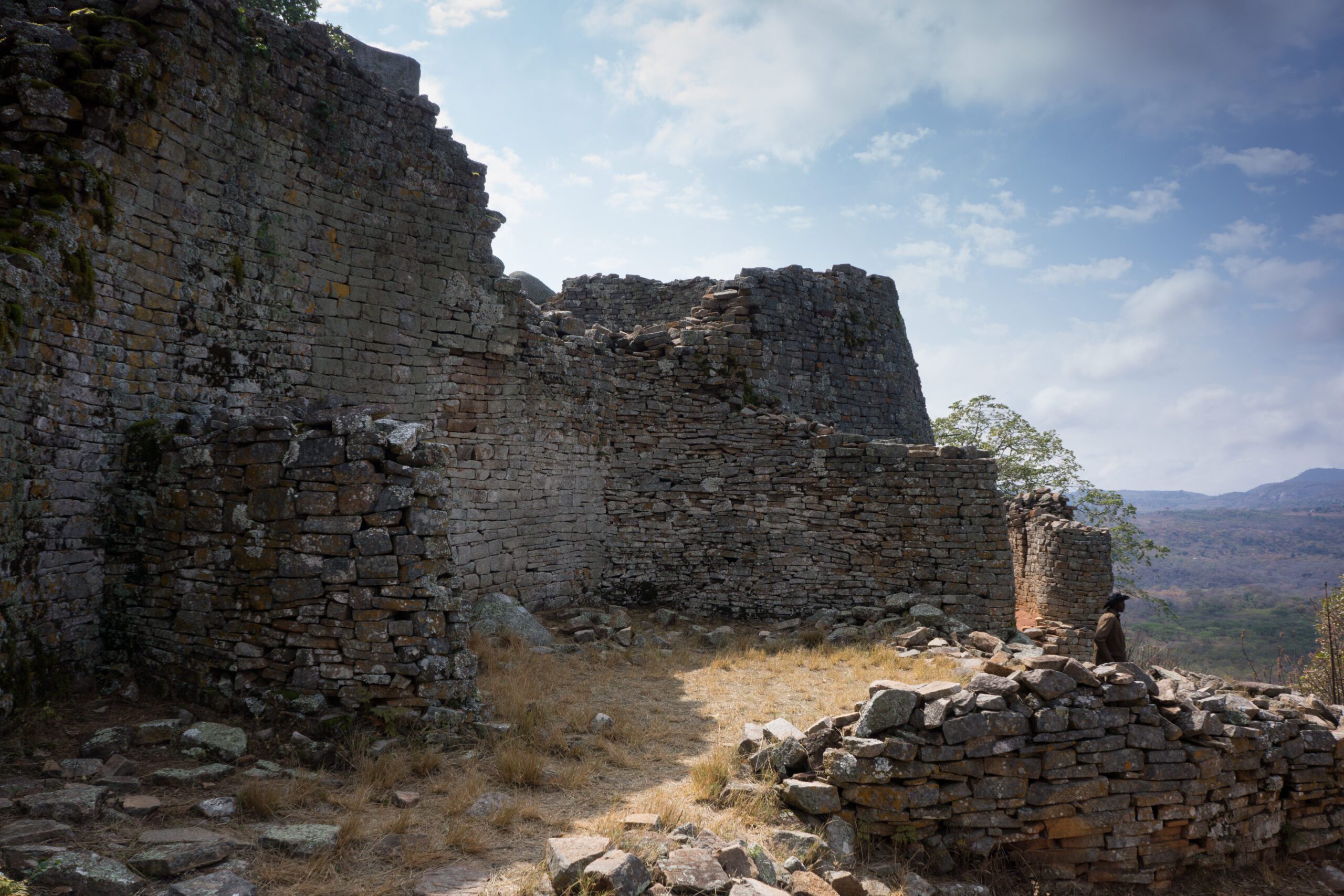
Hill Complex, Great Zimbabwe by Fanny Schertzer, CC BY 3.0
Great Zimbabwe National Monument: A Symbol of African Ingenuity
greensafariguide.com
Introduction
The Great Zimbabwe National Monument is one of Africa’s most iconic and historically significant archaeological sites. Situated in Southern Africa, in the southeastern hills of Zimbabwe, the ruins of this ancient city are a testament to the architectural and cultural prowess of the Kingdom of Zimbabwe during the late Iron Age. Recognized as a UNESCO World Heritage Site in 1986, the Great Zimbabwe National Monument is a proud symbol of African history and ingenuity. It not only represents the power and wealth of the kingdom but also highlights the sophistication of early African civilizations and their far-reaching trade connections.
Historical Background
The Rise of Great Zimbabwe
The Great Zimbabwe national monument flourished between the 11th and 15th centuries, serving as the capital of the Kingdom of Zimbabwe, which spanned much of southeastern Africa. It was a significant political, economic, and religious center that controlled trade routes across the region. The name “Zimbabwe” is derived from the Shona phrase “Dzimba dza mabwe,” which means “houses of stone,” reflecting the impressive stone structures that the civilization left behind.
At its height, Great Zimbabwe was home to over 10,000 people and served as the epicenter of a sophisticated society that traded gold, ivory, and other goods with merchants from as far away as China and the Middle East. This thriving trade made Great Zimbabwe one of the wealthiest and most powerful cities in Africa during the medieval period.
Decline of the City
By the 15th century, the city was largely abandoned. While the exact reasons for its decline are still debated, scholars believe that factors such as overpopulation, environmental degradation, and the depletion of natural resources may have contributed to the city’s fall. Nevertheless, the legacy of Great Zimbabwe endures, symbolizing the might and innovation of early African civilizations.
Architectural Marvels
One of the most fascinating aspects of Great Zimbabwe is its dry stone architecture. The structures were built using granite blocks meticulously cut and stacked without the use of mortar, showcasing the technical skill and creativity of its builders. The ruins are divided into three main areas: the Hill Complex, the Great Enclosure, and the Valley Ruins.
The Great Enclosure
The Great Enclosure is the largest and most impressive structure at Great Zimbabwe. Measuring over 250 meters in circumference and featuring walls that rise up to 11 meters in height, the Great Enclosure was likely used as a royal residence or ceremonial center. Within the enclosure stands the Conical Tower, a solid stone structure that may have had religious or symbolic significance.
The Hill Complex
The Hill Complex is the oldest part of the site and is believed to have been the religious and political center of the city. Situated on a hill overlooking the Great Enclosure, it features stone walls that blend seamlessly into the rocky outcrop. Archaeological evidence suggests that it may have been the residence of the elite, possibly housing the king and his court.
The Valley Ruins
Scattered throughout the valley below the Hill Complex and the Great Enclosure are the Valley Ruins—a series of smaller stone structures that are thought to have housed the city’s common residents and craftsmen. The layout of these structures hints at the hierarchical nature of Great Zimbabwean society, with the elite living on higher ground and the commoners residing in the valley.
Cultural and Economic Significance
Trade and Global Connections
Great Zimbabwe was not an isolated city but a crucial part of the global trade network. The people of Great Zimbabwe were skilled in mining and working with gold, which they exported in exchange for luxury goods such as silk, glass beads, and porcelain from as far away as Persia, China, and India. Archaeological findings such as Chinese ceramics and Arabian glass beads within the ruins provide evidence of these international trade connections.
Religious and Political Power
The Great Zimbabwe National Monument was not only an economic hub but also a religious and political center. The towering stone structures, particularly the Conical Tower, are believed to have had religious significance, possibly representing a royal or spiritual power. Some scholars suggest that the tower symbolized fertility or the strength of the ruling dynasty.


Archaeological Discoveries
Artifacts and Treasures
Numerous artifacts have been unearthed at Great Zimbabwe, including gold jewelry, pottery, and soapstone sculptures, the most famous of which are the Zimbabwe Birds—eight carved soapstone birds that have become national symbols of Zimbabwe. These artifacts provide valuable insights into the culture, art, and religious beliefs of the people who lived in the ancient city.
Global Influence and Impact
The wealth and influence of Great Zimbabwe extended far beyond Africa’s borders. Archaeological evidence points to long-distance trade networks that connected the city to regions as far as India and China. These findings challenge long-standing misconceptions about pre-colonial Africa, showcasing the continent as a significant player in the global economy.
Current Status and Preservation
Preservation Efforts
Today, the Great Zimbabwe National Monument is a protected UNESCO World Heritage Site. Efforts to preserve and restore the ruins have been ongoing for decades, with a focus on conserving the site’s structural integrity and protecting it from environmental degradation. Despite these efforts, the site faces challenges from natural erosion, tourism, and local development pressures.
Zimbabwean Pride and National Identity
Great Zimbabwe holds immense cultural and historical significance for modern Zimbabwe. The name “Zimbabwe” was adopted when the country gained independence in 1980, reflecting a desire to connect the new nation with the achievements of its ancient ancestors. The Zimbabwean flag features an image of the Zimbabwe Bird, further emphasizing the importance of Great Zimbabwe to the nation’s identity.
Visiting Great Zimbabwe
Travel Tips
Visiting Great Zimbabwe offers a fascinating journey into Africa’s past. The ruins are located near the modern town of Masvingo, about 300 kilometers south of Harare, the capital of Zimbabwe. The best time to visit is during the dry season, from May to October, when the weather is cool and dry.
What to See and Do
- Guided Tours: Hire a local guide to explore the Great Enclosure, the Hill Complex, and the Valley Ruins, learning about the city’s history and architecture.
- The Zimbabwe Birds: Visit the museum at the site to see replicas of the famous Zimbabwe Birds and other artifacts uncovered at the site.
- Nearby Attractions: While in the area, consider visiting Lake Mutirikwi for scenic views and outdoor activities like hiking and birdwatching.
The Great Zimbabwe National Monument is a powerful reminder of Africa’s rich history and cultural achievements. As a center of trade, religion, and political power, it played a significant role in shaping the course of African history. Visiting Great Zimbabwe offers a unique opportunity to explore one of the continent’s greatest ancient civilizations and witness firsthand the impressive stone structures that have stood the test of time.
As a symbol of African pride and ingenuity, the Great Zimbabwe National Monument continues to inspire awe and curiosity, reminding us of the continent’s influential place in the global story of human civilization.

